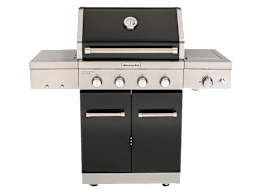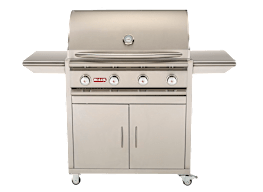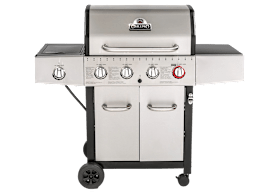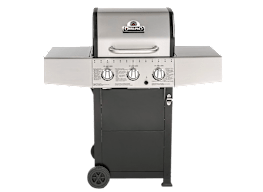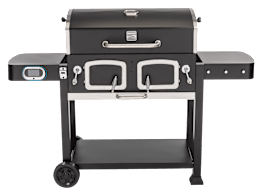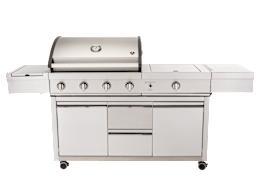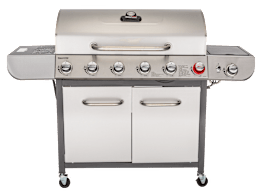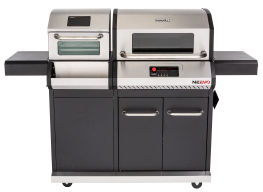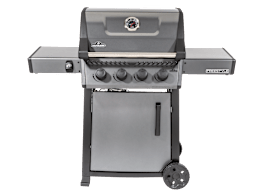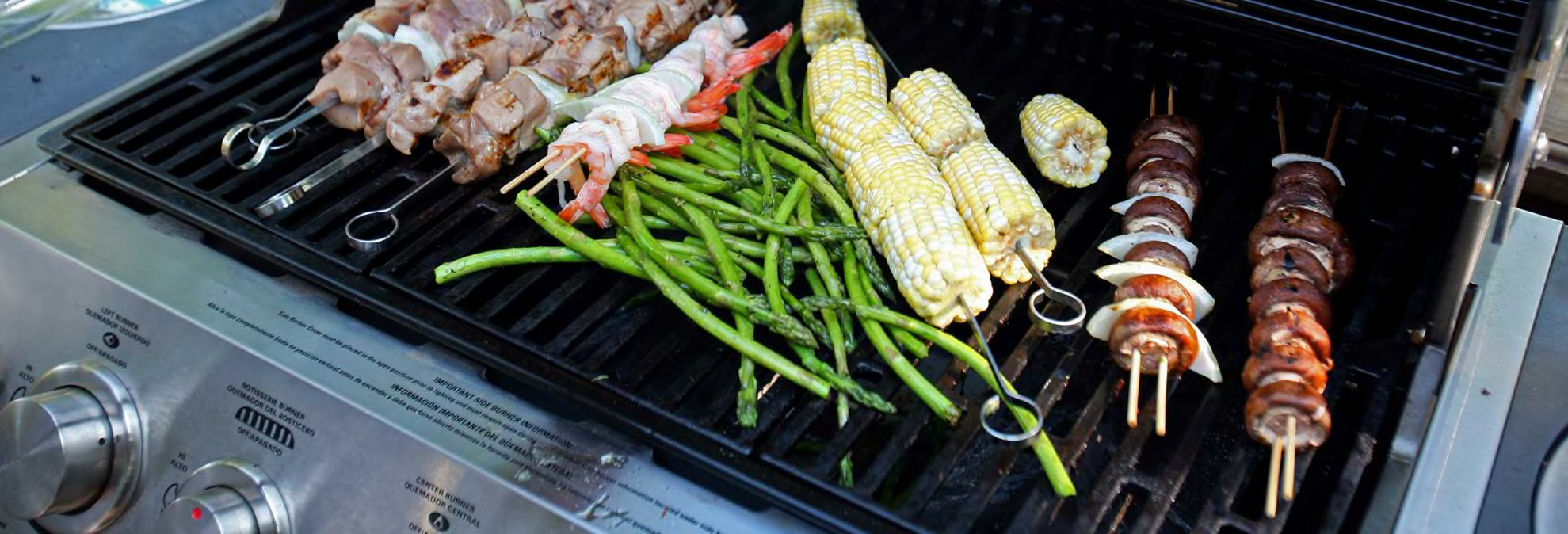
Grill Buying Guide
The grill is the centerpiece of your yard in the same way the range anchors your kitchen. For many Americans, it’s synonymous with summer and outdoor living in general.
When you go to shop for a grill, you’ll need to choose among gas, charcoal, and a relative newcomer to the market, pellet grills. Consumer Reports has no stake in the age-old debate over which form of fuel is the best for barbecuing, and our testing experts find advantages to all three.
Gas is more convenient because you simply turn the burners on to start the grill. Charcoal, whether you have a regular charcoal grill or a more specialized kamado grill, gives you a greater degree of control—you determine the amount of heat by the size of the fire you build. Pellet grills, which use wood pellets, are meant to offer the taste of cooking with wood, plus unmatched precision—they have digital thermostats that allow you to dial in a precise cooking temperature. Because of these differences, we test each type differently.
How CR Tests Grills
CR tests grills to fit various cooking styles and a wide range of budgets, from portable models you can take camping to larger grills designed to feed an extended family. We produce ratings of dozens of new grills each year, including gas, pellet, and charcoal models to suit everyone from the first-time buyer to the seasoned grill master searching for a replacement. Prices range from less than $100 to more than $3,000.
Gas grills: In our lab, we wire the surface of each gas grill with thermocouples and perform four temperature tests. We record a minimum of 3,240 temperatures on each grill. For preheat performance, we measure how hot the surface gets at the 10-minute mark because that’s when our data says most folks like to start cooking. We also assess how evenly each model heats—if you’re cooking a giant batch of burgers, you want them to finish at the same time.
Our indirect-cooking test evaluates how well a grill maintains moderate heat, such as for cooking thick chicken breast without burning it. We also check the temperature range for each grill to make sure you can get it high enough to sear a steak and low enough to slow-cook ribs.
We evaluate the sturdiness of each model using a giant tool that we designed to push and pull each one, to simulate the abuse the grill might suffer when moved across a deck or patio. And we collect data from more than tens of thousands of CR members about their gas grills to see which brands are more likely to last. Those findings are factored into the predicted reliability score you’ll see in our full gas grill ratings.
Charcoal grills: For this type of grill, we test each model with a full chimney of charcoal. We spread the layer of coals evenly across the base of the grill and wire the grates with thermocouples to measure how evenly the coals provide heat across the surface. We score charcoal grills on two temperature tests: one for evenness (again, ensuring that a bunch of burgers or hot dogs will finish cooking at the same time) and one for indirect cooking, for making tender, not burnt, chicken.
We also assess how easy it is to add coals while cooking—many new models have a trap door that allows you to add coals under the grates without disturbing the food while it’s cooking. We check how easy it is to adjust the air vents to control the heat inside. Finally, we look at how easy it is to clean each model and dispose of the charcoal ash.
Kamado grills: These also use charcoal, but their tall, deep shape and relatively small cooking surface help most of these models heat very evenly because all the heat is concentrated across the small grates. So we skip testing these models for evenness and instead focus on testing them on what they’re built for—maintaining high heat. Kamado grills can get to temperatures higher than any other type of grill, around 1,000° F. We test each model’s ability to get that hot by quick-grilling thin-crust pizzas. We also test kamado grills on very low heat by cooking pork shoulder.
Pellet grills: These grills are billed as a cross between gas and charcoal grills. Accordingly, we perform a hybrid of the gas and charcoal tests. We wire the surface with thermocouples, and test for evenness across the grates, indirect cooking, and temperature range. We skip the preheat test that we perform on gas because we’ve found that most pellet grills heat up quickly.
We also assess the ease of cleaning each model, as well as conveniences, such as locking casters, hooks, and side shelves.
Below is more detailed information about gas, charcoal, kamado, and pellet grills, including factors to consider when deciding which type of grill to buy and the various features of each. To find out how the gas, charcoal, and pellet grills we test perform, see our grill ratings.
Gas Grills: Factors to Consider
More Than Burgers
A basic gas grill is fine for cooking burgers and hot dogs, but if you also enjoy grilling fish and sizzling steaks with sear marks, look at the temperature-range score in our gas grill ratings. The higher the score, the better the grill is at cooking a variety of foods. If ribs or a roast is on the menu, you’ll want a grill that does well in our indirect-cooking tests. Indirect cooking is a great way to slow-cook large or tough cuts by placing the meat next to the fire, not over it, with the lid closed to retain heat. Check how the grills do in our indirect-cooking tests.
Bringing the Heat
Btu/hr. (British thermal units per hour) tells you how much gas a grill uses and the heat it can create. But ignore it as a measure of how well a particular model might sear your steak or how fast the grill will heat up. Our tests find that more Btu doesn’t guarantee faster preheating or better cooking—instead, look for a model that scores well in our preheating test.
About Burners
Keep in mind that for gas grills, burners are the most replaced part. Expect them to last two to 10 years. Burners with a warranty of 10 years should last longer than those with no guarantee. If you need to replace them, it’s a 10-minute job.
Ignore Infrared
Lots of gas grills come with infrared burners, which are meant to use intense heat to sear steaks or chops. CR’s advice? Ignore these burners when shopping. Our tests have shown repeatedly that infrared burners don’t sear any better than typical gas burners. Instead, use our temperature-range score to guide you toward models that can reach high searing temperatures as well as low temps for indirect cooking.
Look for Solid Construction
When shopping, you’ll want to carefully look over the construction of the grill. Jostle the assembled grill from several points to test sturdiness; the more stable, the better. Check the cart, wheels, lid, and firebox. Stainless steel carts with seamless construction and welded joints are usually sturdier than painted steel carts assembled with nuts and bolts. We assess the construction of gas grills in our sturdiness test. (We don’t put charcoal, kamado, or pellet models through this test.) Wheels or casters at all four corners or legs make a grill easier to maneuver. And wheels with a full axle are better than those bolted individually to the frame.
Recipe for Safety
Sturdy grills aren’t just better poised to survive multiple grilling seasons; they’re safer, too. Grill stability is important because it can prevent tipping. Avoid grills with sharp metal corners and edges. Test the handle: Your knuckles or fingers shouldn’t be too close to the hot lid. And though some flame flare is normal, the greater the distance between the grates and the burners or flavorizer bars, the fewer the sustained flare-ups.
Types of Gas Grills
Gas grills are classified by size. Grill manufacturers differentiate models by the number of burners—typically two to six—but that doesn’t necessarily tell you the size of the grill. CR classifies size by the usable cooking surface, which we measure by how many burger patties a grill can fit. We then divide those into three size categories:
Small grills: can hold 18 or fewer burger patties.
Midsized grills: large enough to hold 18 to 28 burger patties.
Large grills: large enough to hold 28 or more burger patties.
We also test portable gas grills, which are not divided into size categories.

Portable Gas Grills
A perfect bring-along for camping trips and tailgate parties. Portable grills are also a suitable option for smaller decks and patios.
Cost: $100 to $400

Small Gas Grills (18 or Fewer Burgers)
Compact, nonportable grills save space and are a good option for a small cookout. Most small grills have fold-down shelves to decrease the grill’s footprint. Small grills vary widely in price and appearance, from painted steel carts to stylish stainless steel.
Cost: $100 to $1,000

Midsized Gas Grills (18 to 28 Burgers)
This is the most widely sold grill size. You’ll see basic grills and souped-up models with plenty of storage, plus LED lights and backlit knobs for cooking after dusk. Many mid- to higher-priced gas grills have burner warranties of 10 years or longer.
Cost: $150 to $2,500
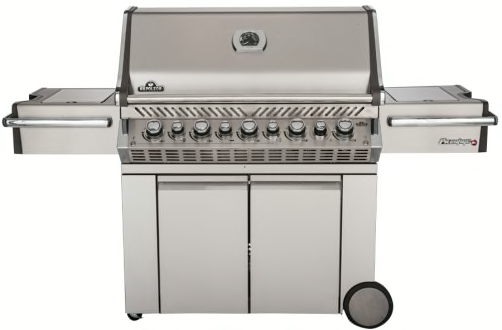
Large Gas Grills (28 or More Burgers)
Large grills usually have the biggest cooking areas. The higher-end models boast the highest-grade stainless steel and have seamless construction, thicker grates, gliding drawers, extra storage space, and more burners of better quality. They also come with a longer warranty.
Cost: $350 to $3,500
Gas Grill Features
Certain features may help you to choose a grill. High-end features, such as gliding drawers for storing utensils and condiments, offer convenience. Other features, such as a pullout grease tray, make grilling and cleanup easier. Here are key features to consider.
- 1
- / 7

Heavy-Duty Grates
Stainless steel and coated cast-iron grates tend to be better for searing and maintaining even grilling temperatures. For the long haul, stainless is more durable.
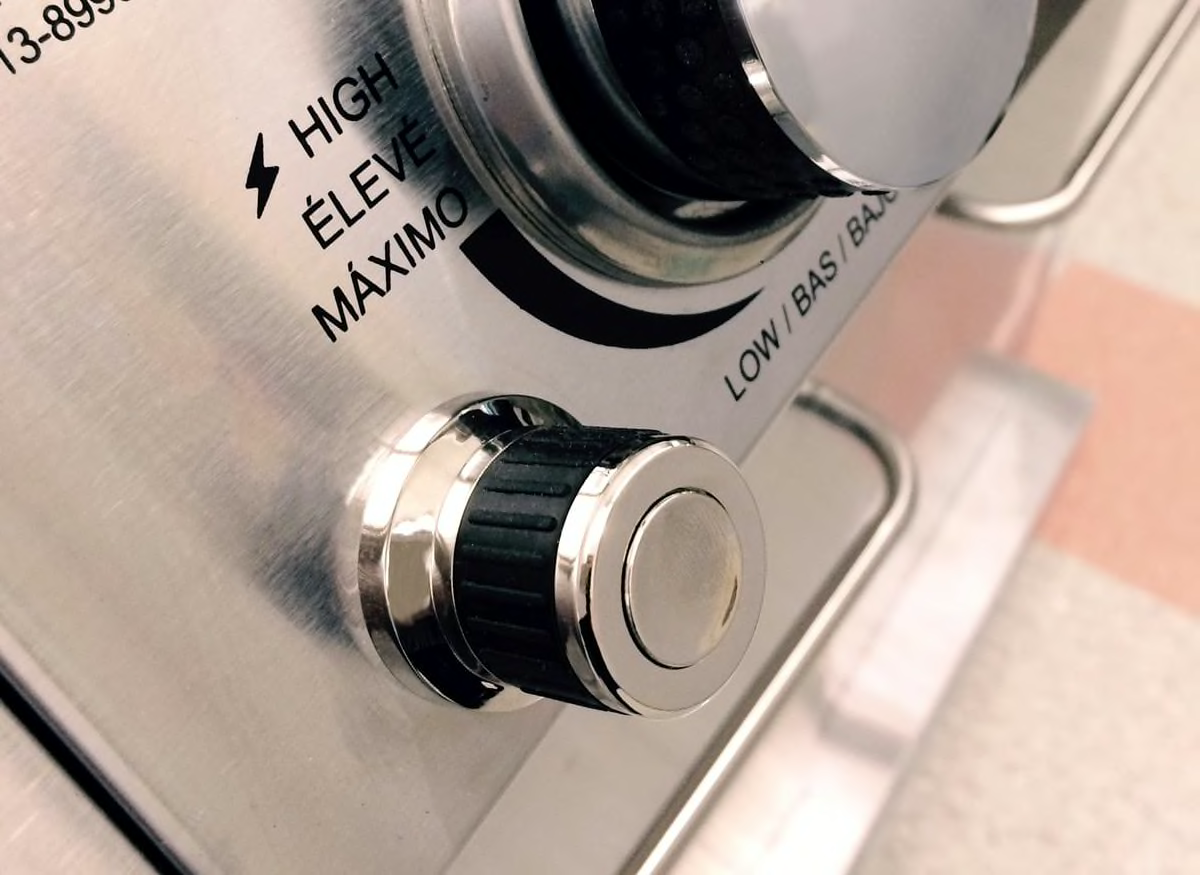
Igniter
An electronic igniter, shown above, is usually easier and more reliable than a rotary or push-button igniter.

Side Burner
Cook a kettle of corn or keep the baked beans warm while grilling the main course. Some side burners are also searing burners.

LED-Lit Controls
For grilling after dusk, LEDs light up the grilling surface and illuminate the control panel or knobs.

Fuel Gauge
A gauge indicates how much propane is left in the tank. If the grill doesn’t come with a gauge, you can buy one separately.
PHOTO: SPIRIT
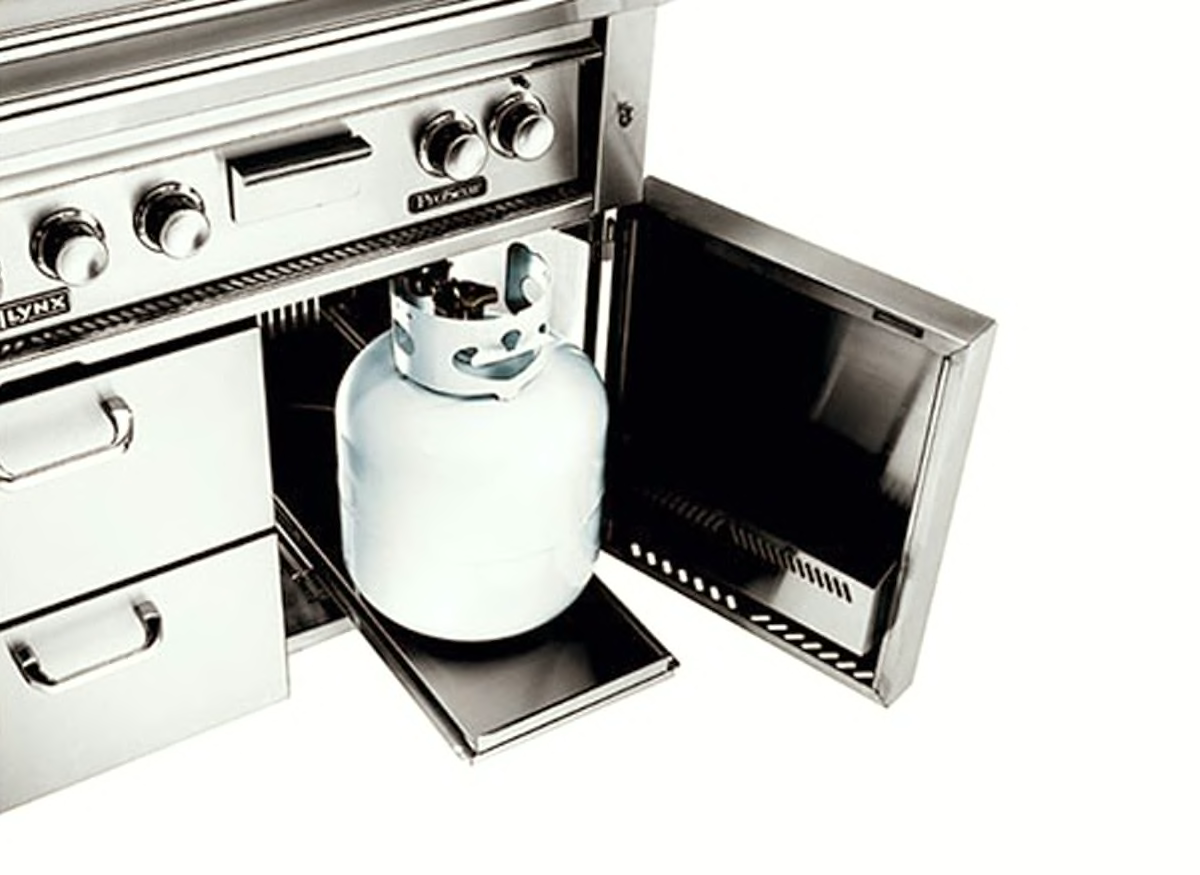
Pullout Tray for Propane Tank
It makes turning the tank on or off a snap and simplifies changing the tank when you run out of gas.
PHOTO: LYNX
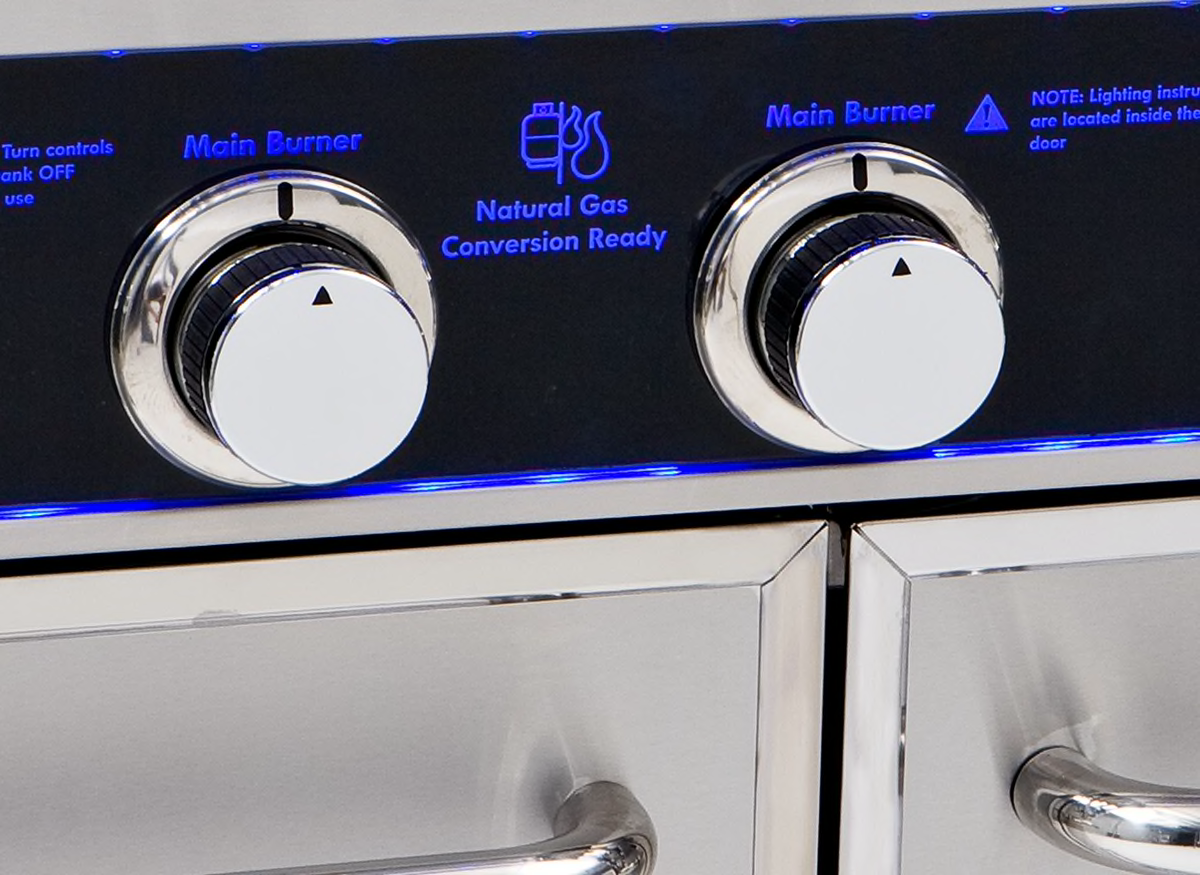
Dual-Fuel Valves or Natural Gas Conversion Kit
Most grills use propane, but some have dual-fuel valves for conversion to natural gas. You also can buy a conversion kit for about $50 to $100. Once hooked up to your home’s natural gas line, your grill will never run out of fuel and there’s no need to refill propane tanks. But the grill will be less mobile, and you’ll want to call a pro to run the gas line. Some brands also make entirely separate natural gas versions of certain models.
Heavy-Duty Grates
Stainless steel and coated cast-iron grates tend to be better for searing and maintaining even grilling temperatures. For the long haul, stainless is more durable.
Igniter
An electronic igniter, shown above, is usually easier and more reliable than a rotary or push-button igniter.
Side Burner
Cook a kettle of corn or keep the baked beans warm while grilling the main course. Some side burners are also searing burners.
LED-Lit Controls
For grilling after dusk, LEDs light up the grilling surface and illuminate the control panel or knobs.
Fuel Gauge
A gauge indicates how much propane is left in the tank. If the grill doesn’t come with a gauge, you can buy one separately.
PHOTO: SPIRIT
Pullout Tray for Propane Tank
It makes turning the tank on or off a snap and simplifies changing the tank when you run out of gas.
PHOTO: LYNX
Dual-Fuel Valves or Natural Gas Conversion Kit
Most grills use propane, but some have dual-fuel valves for conversion to natural gas. You also can buy a conversion kit for about $50 to $100. Once hooked up to your home’s natural gas line, your grill will never run out of fuel and there’s no need to refill propane tanks. But the grill will be less mobile, and you’ll want to call a pro to run the gas line. Some brands also make entirely separate natural gas versions of certain models.
Charcoal Grills: Factors to Consider
Airflow
Charcoal grills rely on airflow to regulate heat. More air moving over the coals lets a fire burn hotter, while limiting the flow keeps coals just lit, for low-and-slow cooking. Look for a model with a tight-fitting lid and solid dampers or vents.
Accessible Coal Bed
When you cook for a prolonged period, you’ll need to add coals. Our testing shows that the temperature of charcoal peaks within 20 minutes after it’s lit. Look for a charcoal grill with a dedicated door to add coals to your fire, or one with hinged grates that allow you sneak in more coals or rearrange them while you cook.
Grill Size and Shape
Because charcoal briquettes all burn at about the same temperature, the size and shape of your grill will dictate how heat is concentrated or diffused. Wider models, including most barrel grills, can cook more foods at once, but over a thinner coal bed, so they’re better for a burger and bratwurst cookout. Kettle and kamado grills tend to have deeper and narrower coal beds, which can concentrate heat for searing or, if you close the dampers, slow the rate at which coals burn, for long, slow cooking.
Adjustable Coals or Cooking Grates
Foods close to the coals sear faster but are prone to burning before they cook through. Look for a grill with a coal bed or cooking grates that can be raised or lowered with a crank—it’ll give you one more way to tame the flames and control the heat.
Safety
Charcoal grills pose some risks that other grills don’t. That’s because unlike a gas or pellet grill, where heat and flames are adjusted via controls, with a charcoal grill, you build and control the fire. Most grills have an upper limit to the quantity of charcoal you should add, to help prevent damage to the grill or a fire that can get out of control. Because the flames can be higher, and harder to tame, you should use only long-handled tools, such as tongs and spatulas, that are specifically designed for grilling. Additionally, wear a short-sleeved or tight-fitting shirt to avoid fabric draping over the flames. Always make sure to keep a combination fire extinguisher handy when grilling over charcoal. (Look for “Class ABC” on the label, which means the extinguisher is suitable for wood, electrical, and grease fires.) A garden hose is not a safe alternative—while water can extinguish lit coals, a grease fire, like those that result from any fatty food igniting, will spread if sprayed with a hose.
Types of Charcoal Grills
You’ll see more variety in the shape and material construction of charcoal grills than in gas models. Classic kettle grills are round, and widest at the cooking grates—they taper down near the coal bed. Barrel grills resemble a barrel turned on its side, and they tend to be the largest charcoal models—they typically use a lot more charcoal and hold more food.
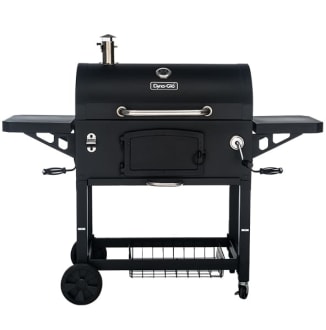
Charcoal Barrel Grills
These rectangular grills offer an alternative to the classic kettle grill. They hold more food than kettle or kamado grills, and many have helpful features, such as adjustable cooking grates and a door to add charcoal. Most also have a removable ashpan. But they use more charcoal than kettle grills, and you’ll need to add a lot of coals to build a layered bed for prolonged cooking.
Cost: $100 to $300

Charcoal Kettle Grills
These classic charcoal grills are smaller than most barrel or kamado-style grills, so they take up less space on a deck or patio. The tapered shape lets you build a deeper bed of coals than you can in a barrel grill, so you can sear or cook for a longer time without adding coals. But they hold less food than most barrel grills, and most of the three-legged kettle grills we’ve seen aren’t as sturdy as barrel-style grills, which generally have four legs.
Cost: $50 to $400
Kamado Grills: Factors to Consider
Airflow
Just like regular charcoal grills, kamado grills rely on airflow to regulate heat. More air moving over the coals lets a fire burn hotter, while limiting the flow keeps coals just lit, for low-and-slow cooking. Look for a model with a tight-fitting lid and solid dampers or vents. Many kamado grills have a gasket on the lid, and even locking latches, to create the tightest seal possible. Some kamado grills also have multiple dampers, which makes it easier to fine-tune the temperature you’re shooting for.
Material
We divide kamado grills into two categories: ceramic and nonceramic. Ceramic grills tend to be heavier, with inch-thick walls all the way around. Nonceramic models are made of metal. They tend to weigh less and to be more maneuverable.
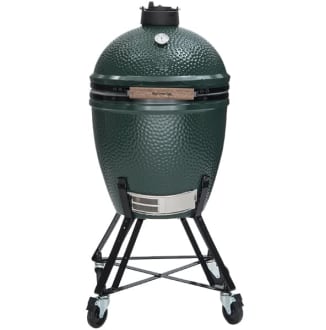
Ceramic Kamado Grills
Most of these grills are designed to be airtight, amplifying the level of temperature control you get from the dampers. The deep, narrow shape allows you to build a deep coal bed for searing or prolonged cooking. They’re also designed to retain heat—some models can cook 8 hours or longer without the need to add coals. Thick ceramic walls can help hold in heat longer. And the dampers allow you to fine-tune the temperature for cooking. But they tend to have a higher starting price—those in our ratings start at $700. They’re also heavy, anywhere from 170 to 300 pounds, making them harder to assemble, transport from the store, and move around your yard. And while they hold a lot of charcoal, the usable cooking surface is often smaller than that of kettle or barrel grills.
Cost: $700 to $2,500
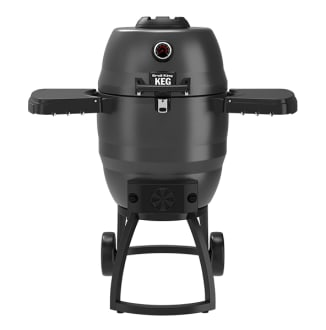
Nonceramic Kamado Grills
As with ceramic models, most are designed to be airtight, amplifying the level of temperature control you get from the dampers. Many have locking latches to seal the lid to the body of the grill. Even though the walls aren’t as thick as ceramic, these grills are generally made from multiple layers of metal, helping them hold on to heat. But their starting price is lower than that of ceramic kamado grills, with some large models costing as little as $300. They’re also lightweight and easier to move and assemble than ceramic kamado grills. But they can feel cheaper and flimsier, too, and some aren’t as well-insulated as the best ceramic models, making it more difficult to control temperatures.
Cost: $300 to $2,000
Charcoal Grill Features
While extra features are nice to have on a gas grill, they can make or break the experience of cooking on charcoal. Because charcoal grills are all about controlling the coals, ease of use is the most important test we perform on these models—features that make cooking easier also tend to ensure better results. Features play a big role in this score, and here are the ones our testers look for.
- 1
- / 5
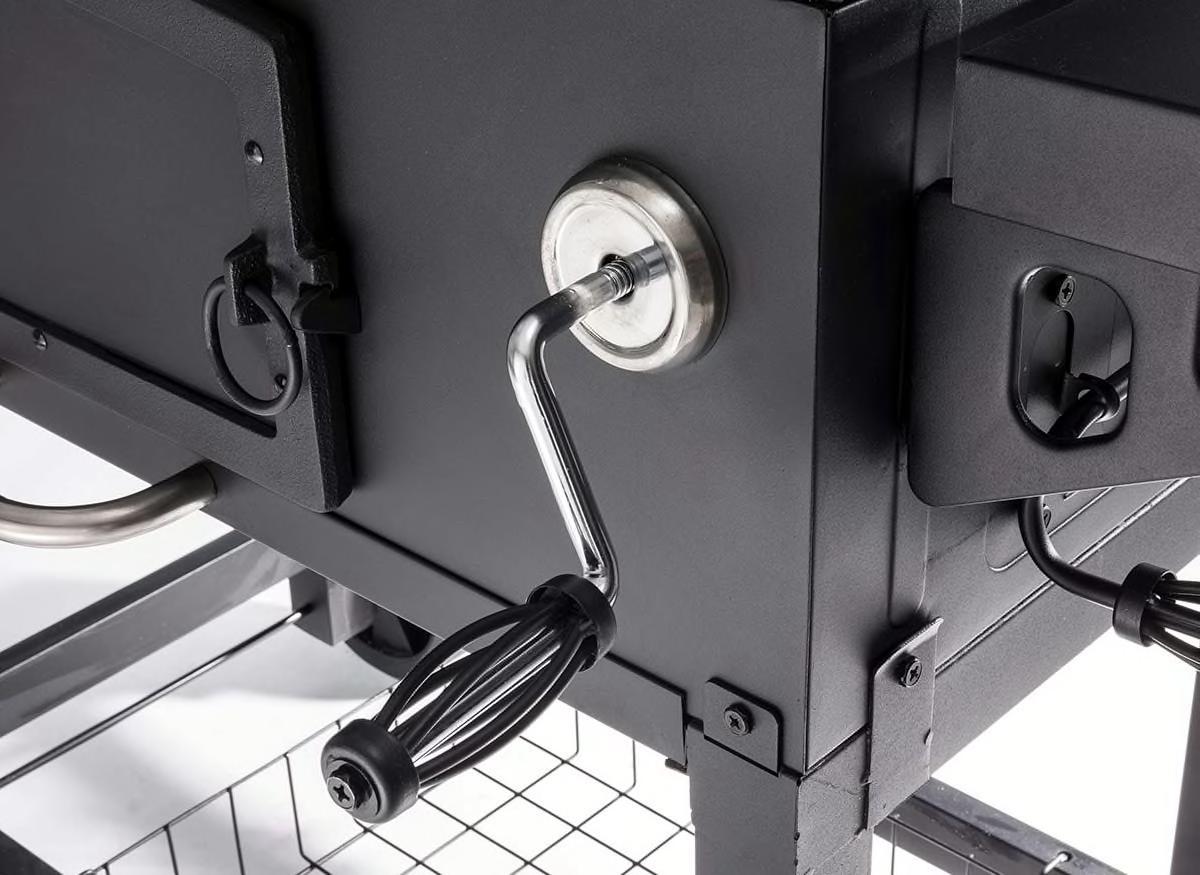
Adjustable-Height Cooking Grates
Adjustable-height cooking grates let you raise and lower food—the equivalent of turning down a burner on a gas grill. Get it close to the coals for searing or farther away to, say, cook a skin-on chicken breast all the way through without charring the skin.
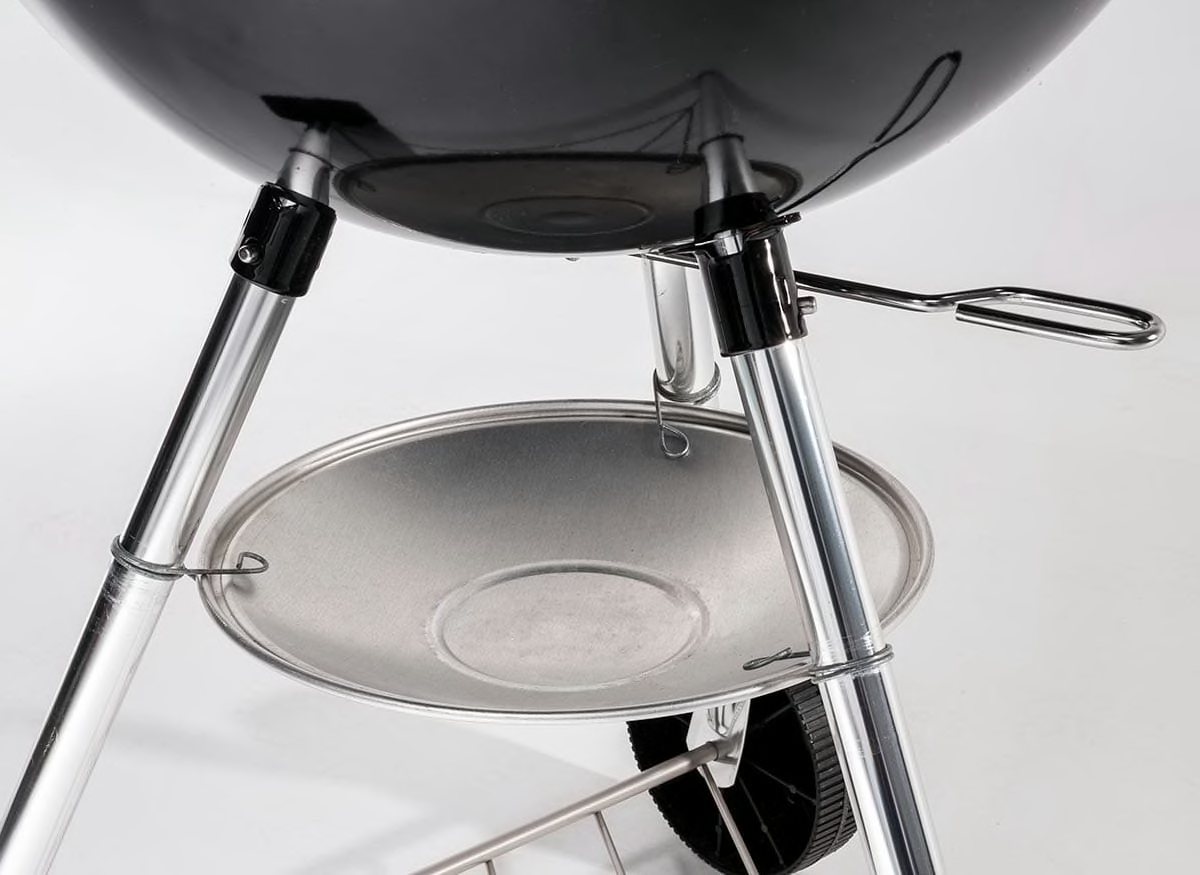
Easy-to-Clean Ashpan
Charcoal cooking can get messy. All the ash, residual coal, and food drippings tend to collect at the bottom of a grill. Models with a removable ashpan are easiest to clean.

Easy-Open Grates
Our testing shows that most charcoal reaches its peak temperature within 20 minutes of being lit. If you want to keep a hot fire going, you’ll need to add coals while cooking, and a dedicated coal door or grates that slide open easily allow you to add charcoal without moving too much food or removing hot cooking grates.

Multiple Vents or Dampers
Controlling the heat in a charcoal grill is about the quantity of coal and the airflow. More air fuels burning coals, creating hotter temperatures, and a grill with at least two vents gives you the flexibility and control you want.
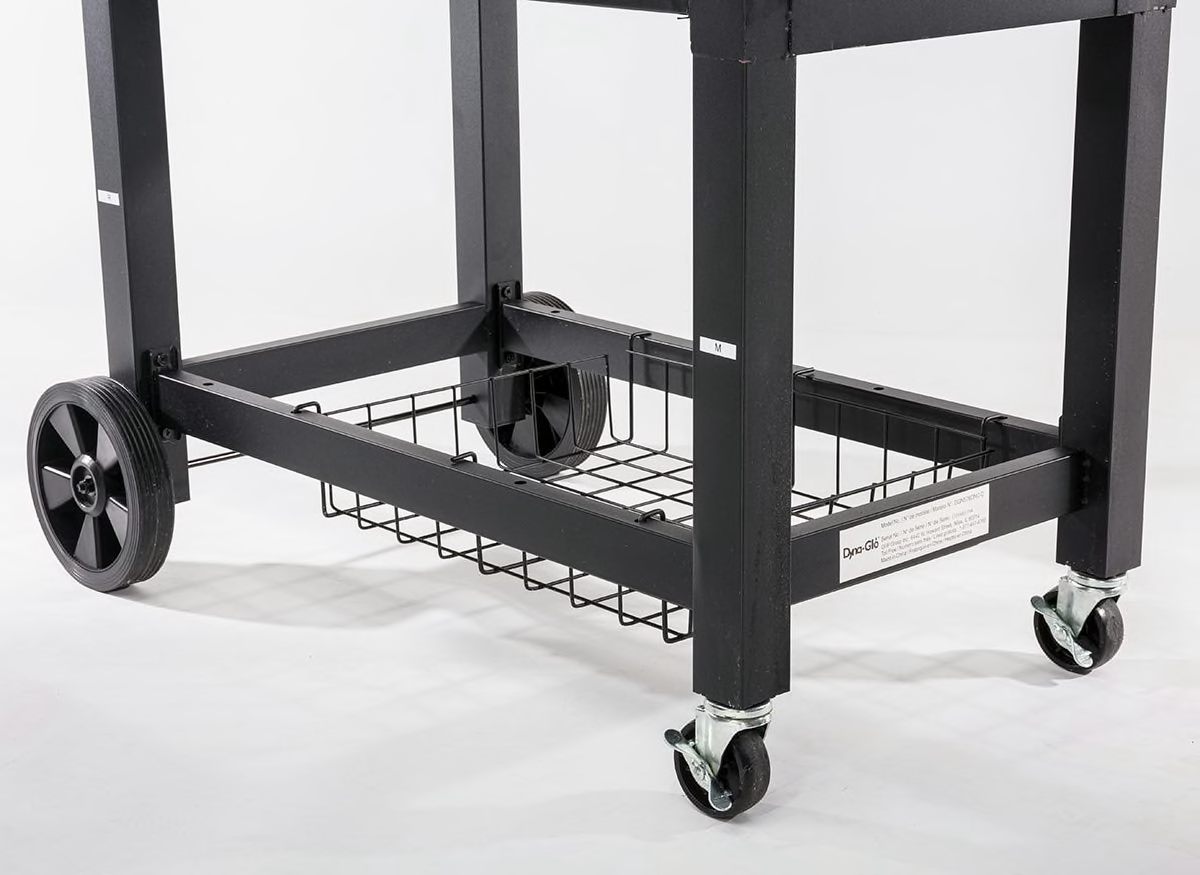
Wheels for Each Leg
Charcoal grills aren’t always as sturdy as the best gas models. Those with a wheel or caster for each leg are easier to move on your deck or patio and are less likely to bend when moved.
Adjustable-Height Cooking Grates
Adjustable-height cooking grates let you raise and lower food—the equivalent of turning down a burner on a gas grill. Get it close to the coals for searing or farther away to, say, cook a skin-on chicken breast all the way through without charring the skin.
Easy-to-Clean Ashpan
Charcoal cooking can get messy. All the ash, residual coal, and food drippings tend to collect at the bottom of a grill. Models with a removable ashpan are easiest to clean.
Easy-Open Grates
Our testing shows that most charcoal reaches its peak temperature within 20 minutes of being lit. If you want to keep a hot fire going, you’ll need to add coals while cooking, and a dedicated coal door or grates that slide open easily allow you to add charcoal without moving too much food or removing hot cooking grates.
Multiple Vents or Dampers
Controlling the heat in a charcoal grill is about the quantity of coal and the airflow. More air fuels burning coals, creating hotter temperatures, and a grill with at least two vents gives you the flexibility and control you want.
Wheels for Each Leg
Charcoal grills aren’t always as sturdy as the best gas models. Those with a wheel or caster for each leg are easier to move on your deck or patio and are less likely to bend when moved.
Pellet Grills: Factors to Consider
Pellet grills blend the flexibility of a charcoal grill and smoker with the convenience of a gas grill. These grills all look about the same, and feature a large metal bin, or “hopper,” to which you add pellets made from the compressed sawdust of flavorful woods, such as oak, hickory, and mesquite. You can buy the pellets at a home center or hardware store. An electronic igniter draws out these pellets and lights them, creating heat and smoke, which imparts a distinct flavor to your food. An especially convenient feature: A thermostat allows you to adjust the heat to a precise temperature, something you can’t do with gas or charcoal grills. Prices for models in our tests range from $400 to $1,200.
Hopper: The hopper size determines how many pellets a grill can hold, and in turn, how long the grill will run before you need to add fuel. The larger the hopper, the longer the grill can cook from a single load.
Temperature range: Look for a pellet grill with the broadest possible temperature range. Those in our tests run as low as 160° F and as high as 600° F, and even hotter on a dedicated searing zone. These models are more versatile because they can sear at high temperatures and slow-smoke foods at low temperatures. It’s worth noting that they generally can’t get as hot, or sear as well, as the best gas, charcoal, and kamado grills.
Smoking: In general, smoking foods on a pellet grill is as easy as filling the hopper with the pellets of your choice and dialing in a low temperature, usually below 225° F. That makes it far easier than fine-tuning a gas or charcoal grill.
Searing zone: Most pellet grills have heat deflectors across the cooking surface that help prevent burning and flare-ups. But that can make it harder to sear food because all the heat is indirect, which doesn’t produce distinct grill marks. For searing, you’ll want a model that has a dedicated searing zone, which allows you to remove the heat deflector so that foods such as steak can be directly exposed to the flame. As a group, these models still don’t sear as well as the best gas and charcoal grills.
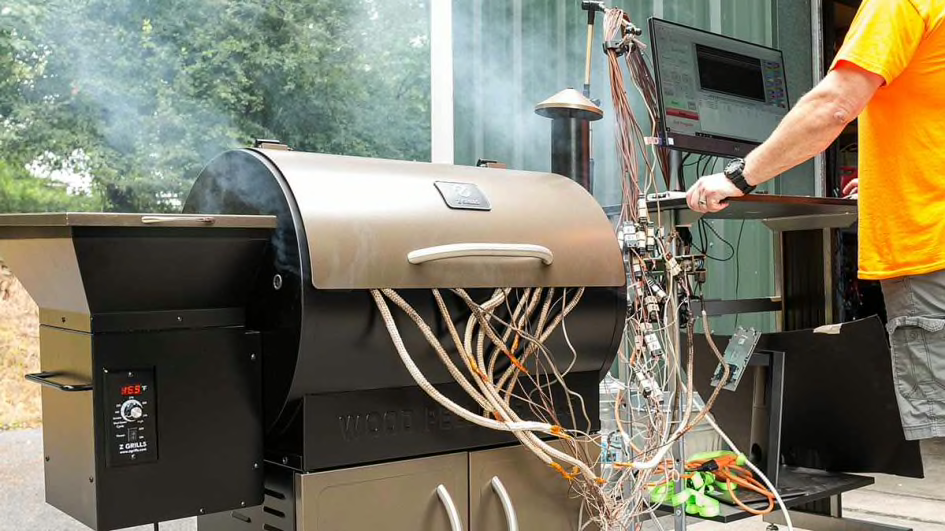
Photo: Consumer Reports Photo: Consumer Reports
Gas Grill Basics and More
For more, watch our video buying guide below.
Gas Grill Brands to Consider
Big Green Egg is one of the first widely sold kamado grills in the U.S. These iconic grills have developed a cultlike following, with devotees (who call themselves Eggheads) who swear nothing cooks better. The Big Green Egg has inspired a number of copycat cookers from other brands.
The Broil King lineup includes grills ranging from portables all the way up to large models with the styling of pro-style ranges. The grills are in the upper-middle to high price range, from $300 to $2,200. CR members gave top marks for appearance and high marks for grilling performance, durability, ease of use, and ease of cleaning.
Broilmaster gas grills are sold at specialty stores for $800 and up, with the Super Premium Series costing around $1,500. CR members gave high marks for ease of use and appearance but were lukewarm about grilling performance, durability, and ease of cleaning.
Char-Broil is one of the top-selling brands and has a wide product range that includes a hybrid grill that allows you to cook with charcoal and gas. We tested this model, among other Char-Broils, and you’ll see it in our gas grill ratings. Sold at retailers nationwide, Char-Broil gas grills cost $100 to $600. CR members gave high marks for grilling performance, ease of use, and appearance but were lukewarm about durability and ease of cleaning.
Char-Griller’s gas grill lineup is narrow. Models cost less than $200 and are sold at Home Depot, Lowe’s, Walmart, and online. CR members gave high marks for grilling performance, ease of use, and appearance but were lukewarm about durability and ease of cleaning.
Coleman conjures up images of camping, but the company also makes portable gas grills for the patio for $400 to $600. CR members gave high marks for grilling performance, durability, ease of use, and appearance but were lukewarm when it came to ease of cleaning.
Dyna-Glo gas grills are widely available and cost around $200 to $600. A dual-fuel grill that allows you to grill with charcoal and gas has been added to the lineup. We tested it, and it appears in our gas grill ratings. CR members gave high marks for Dyna-Glo’s ease of use and appearance but were lukewarm about grilling performance and ease of cleaning.
Kenmore gas grills are available at a wide range of prices, from $200 to $2,000. They’re sold at Sears as well as online at Amazon, Home Depot, and Wayfair. CR members gave high marks for ease of use and appearance but were lukewarm about grilling performance, durability, and ease of cleaning. Note that our brand reliability survey found that Kenmore gas grills were among the more repair-prone, and we cannot recommend them at this time. You’ll see brand reliability information in our gas grill ratings.
KitchenAid is a well-known name in cooking appliances and extends the brand name to cooking outdoors. KitchenAid gas grills cost between $400 and $1,500. CR members gave top marks for appearance and high marks for grilling performance, durability, ease of use, and ease of cleaning.
Member’s Mark grills are sold at Sam’s Club. The grills usually cost between $200 and $500. CR members gave high marks for ease of use and appearance but were lukewarm on grilling performance, durability, and ease of cleaning. Note that our brand reliability survey found that Member’s Mark grills were among the more repair-prone, and we cannot recommend them at this time. You’ll see brand reliability information in our gas grill ratings.
Excluding portable models, Napoleon gas grills boast stylish stainless steel at higher prices—$700 to more than $2,000. CR members gave Napoleon grills top marks for appearance and ease of use, and high marks for grilling performance, durability, and ease of cleaning.
Nexgrill gas grills typically cost $200 to $400 and are available at Home Depot. CR members gave Nexgrill grills high marks for ease of use and appearance but were lukewarm about grilling performance, durability, and ease of cleaning.
Traeger was the first manufacturer of pellet grills, and it remains one of the best-known brands. It makes grills in a variety of sizes, and with different features—the most premium offerings have smart capabilities. Prices range from about $400 for smaller models to about $1,200 for the most decked-out options. Traeger grills are sold online, at local retailers, and at Ace Hardware and Home Depot.
Weber kettle charcoal grills have long dotted suburbia, but Weber is also known for gas grills in the upper-middle and higher price range—$400 to $2,500. Weber grills are widely available, making the brand one of the top sellers. CR members gave Weber gas grills top marks for grilling performance, durability, ease of use, and appearance, and high marks for ease of cleaning. Weber came out ahead of many other brands in our survey for overall consumer satisfaction.
















